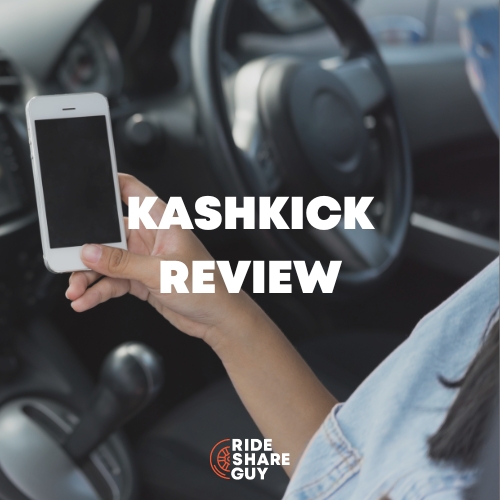A recent academic study, Platform Driving in Seattle, claims median earnings for drivers in Seattle is $23 an hour (after expenses). If true, that’s a lot higher than anything we’ve seen before. Senior RSG contributor Jay Cradeur dug into the Seattle study, and here are his takeaways.
How much do rideshare drivers earn? That is the question a study in Seattle was designed to answer. Do we make $23.25 per hour after expenses as the study indicates, or do we make closer to $13 per hour (after expenses) as we found at our Uber driver survey?
Major takeaways:
- Seattle study found drivers earn $23/hour after expenses – close to Seattle median earnings of $25/hour
- 92% of Uber/Lyft and other rideshare drivers earn more than Seattle’s minimum wage
- Earnings data did not include streaks or bonuses
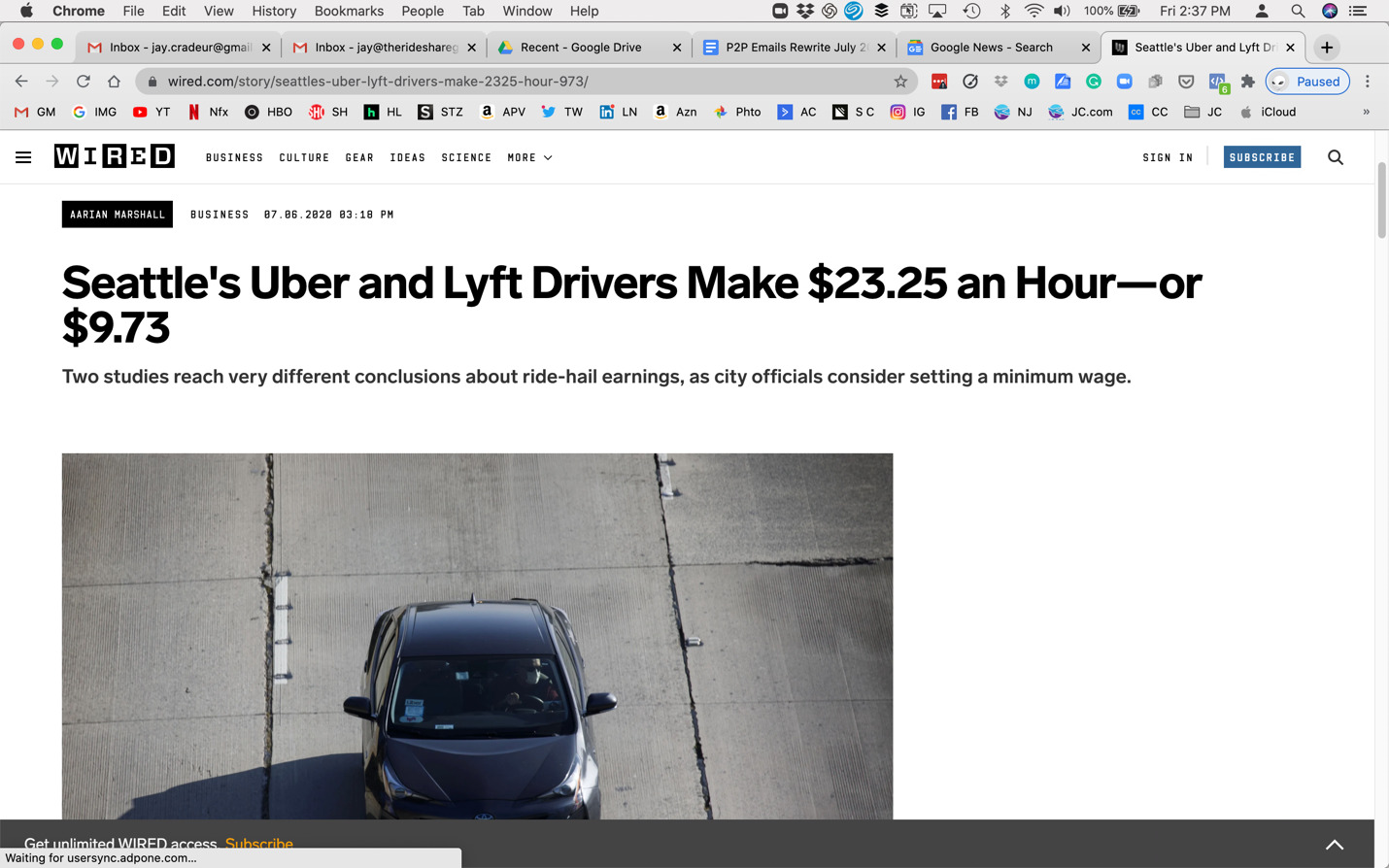
1. How Are Earnings and Expenses Calculated?
The study I’m covering, Platform Driving in Seattle, comes out of Cornell University. It found that median hourly earnings for drivers in Seattle was $23 – close to Seattle’s median earnings of $25 an hour.
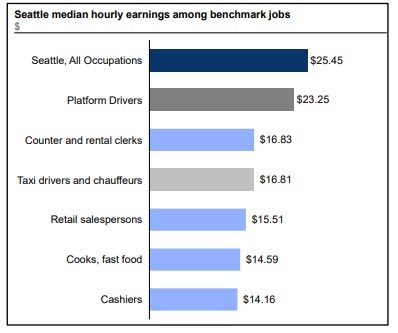
You can read the full report here.
Over at the RSG podcast, Harry interviewed one of the authors of the study, Louis Hyman, and I strongly recommend you listen to it. You can also watch the interview on YouTube below. Not only do they cover the findings, Harry and Louis also discuss some of the challenges of a survey like this.
Certainly, if you are an Uber or Lyft driver, you have done some calculations to determine your per-hour earnings. That is the bottom line.
The #1 reason we drive is to earn money. Therefore, how much we can earn makes a big impact on our lives. The challenge is, how do you calculate your per-hour earnings. The way I see it, there are three components to the calculation:
- How much Uber and Lyft pay you?
- How many hours did you work?
- How much were your expenses for the time you worked?
Gross Pay
This is fairly easy to calculate. All you need to do is look at your Uber or Lyft app and it will show you exactly how much you made.
When you cash out at the end of the day, how much money is going into your bank? For our example, I will use my daily target of $300.
Hours
This gets a bit more confusing. When I drove, I started my workday from the moment I got in my car. Even if I had to go and get gas, stop and get a Starbucks vanilla sweet cream cold brew before I turned on my app. I did not include my lunch break as everyone who works takes a lunch break and that is considered personal time. My day would end when I got home and turned my car off.
In the Cornell study conducted in Seattle, commute time was not included. Also, if a driver had his or her app on and then did not get a ride, that time was also not included.
I feel this is one shortfall of the study as there can be several hours which should be included which were not in the study. This naturally boosts the per hour earnings by reducing the number of hours. For example:
$300 / 10 hours = $30.00 / Hour
$300 / 8 hours – $37.50 / Hour
Expenses
In the study, all drivers were assessed what Cornell called Marginal Expenses. Those are things that are not fixed, and which fluctuate with use. We are talking about things like Gasoline, Maintenance, and Depreciation.
Furthermore, full-time drivers (32 hours or more per Washington’s definition of full time) were assessed Fixed Expenses such as your monthly car payment and your car insurance. Consequently, in the study, full-time drivers actually earned less than part-time drivers because the full-time driver expenses were significantly higher.
While the average net per hour earnings for Seattle drivers was $23.25 per hour, the earnings for full-time drivers were just over $17 per hour.
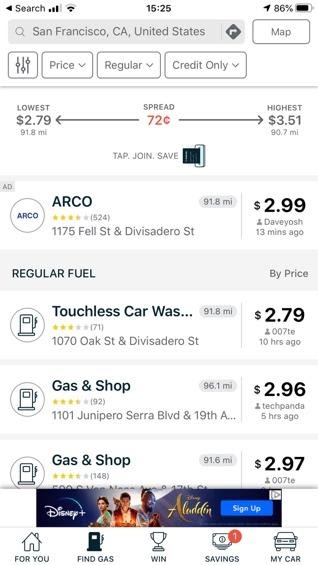
The Cornell study states that a driver’s expense is $1 for every $10 in earnings. That does not seem accurate to me. (If you’re interested in digging into the expenses, head to page 97 of the report).
If I drive my car and earn $300, I am going to drive approximately 300 miles. At 30 MPG, that would be 10 gallons of gas. At current gas prices in San Francisco of $3 per gallon, that would be $30.00.
Then on top of that, we would add maintenance ($5 per day or $150 per month) and depreciation ($16 per day or $500 per month) which would put us $51.00, which is significantly over 10% in expenses.
On top of that, you have rideshare insurance, which all drivers should carry, full time or part-time.

2. Seattle Has High Rates
In gathering information for this article, only our own Sergio Avedian made mention of the fact that Seattle has rates much higher than most of the country.
“Avedian says wages are higher in Seattle than Los Angeles, where he lives, in part because the market is smaller. But he takes issue with the Cornell researchers’ decision to dismiss some repair and insurance costs.” –Wired.com
When we see headlines that proclaim Uber and Lyft drivers earn $23.25 an hour “after expenses” the response for most drivers is flabbergasted suspicion.
I can make $300 in 10 hours in San Francisco (before expenses), but I would be lucky to hit $200 in that same time driving in Sacramento. I can imagine it would be even less in many other parts of the country.
3. What About Training and Experience?
The Cornell study also noted the extreme distribution of driver’s earnings. Some drivers could only earn $10 per hour while others could earn over $40 per hour.
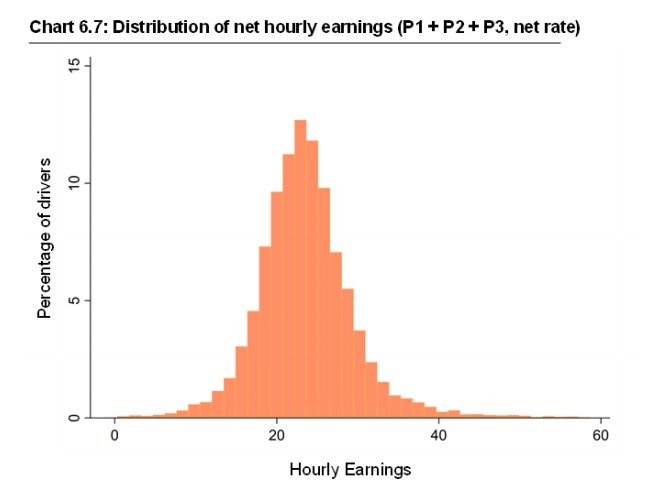
This makes a strong argument for training and experience. The drivers who know what they are doing are able to maximize their revenue, unlike a new or part-time driver who has less experience and is less committed to the craft of rideshare driving.
This was actually something the study’s author, Louis Hyman, mentioned to Harry as something he wanted to study further. Does driver experience and education boost earnings? I would say yes, but it is not something the authors studied – yet.
If you want to up your game, check out our course Maximum Ridesharing Profits, in which Harry and I share all our secrets to make the most money in the least amount of time.
What This Means for Drivers
For me, it’s hard to get excited about this survey because it is so narrow and really only pertains to Seattle drivers.
Yes, the results are surprising. On average, using their methodology, the “average” earnings in Seattle was $23.25/hour after expenses. But that doesn’t do much for the driver working the late-night bar scene in Folsom, California or the afternoon rush in Peoria, Illinois.
Each driver has their own way of driving, of earning, of managing their expenses, and of commuting to work. It is prudent to figure out what you make so you can work to improve on that number.
This has been a game I have played with myself since I started driving in December 2015. I was able to increase my hourly earnings until Uber and Lyft started cutting our pay and reducing our bonuses. The $23.25 per hour can change real fast if Uber or Lyft decide the drivers are getting paid too much in Seattle.
Drivers, what do you think of this study? If you drive in Seattle, would you say these earnings per hour are accurate or not?
-Jay @ RSG




